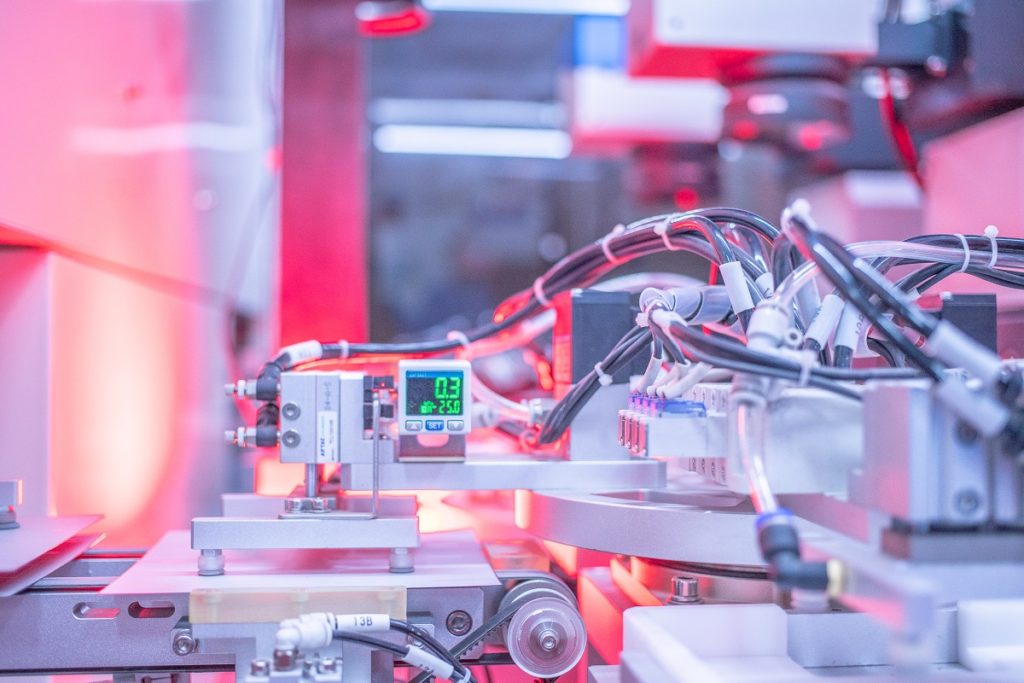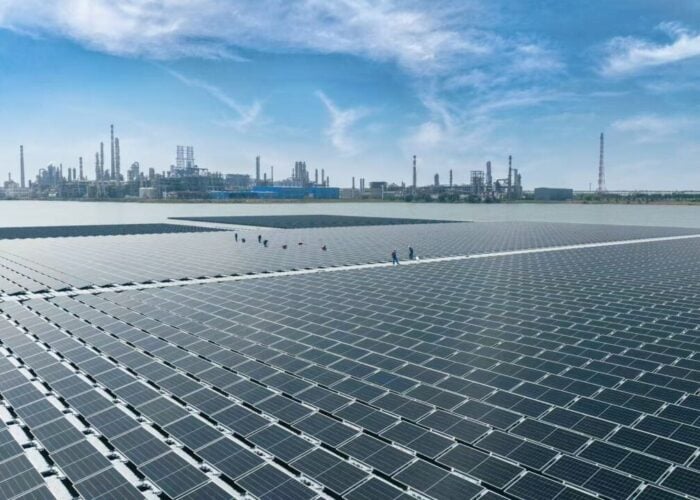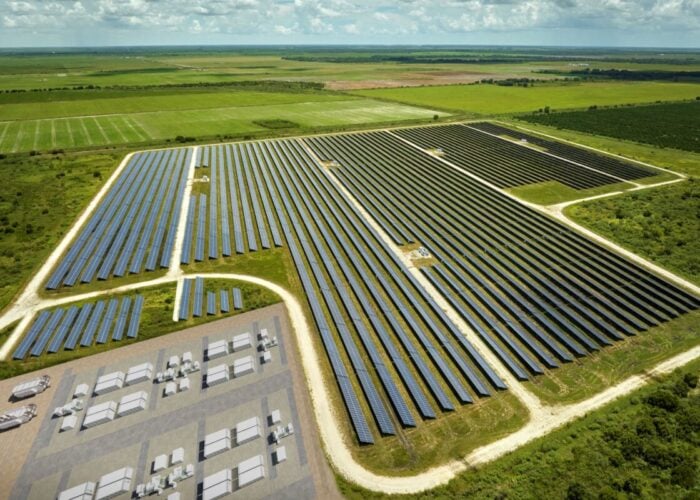
The top global module companies have released their interim reports of the year that show their performance against the backdrop of a PV industry beset by supply chain challenges, rising material and component costs and fraught international relations.
With the implementation of many international favourable policies, both in China and abroad, the whole industry is ramping up while companies are simultaneously targeting growth in local and global markets.
Unlock unlimited access for 12 whole months of distinctive global analysis
Photovoltaics International is now included.
- Regular insight and analysis of the industry’s biggest developments
- In-depth interviews with the industry’s leading figures
- Unlimited digital access to the PV Tech Power journal catalogue
- Unlimited digital access to the Photovoltaics International journal catalogue
- Access to more than 1,000 technical papers
- Discounts on Solar Media’s portfolio of events, in-person and virtual
On 26 August, following publication of JinkoSolar’s financial reports, the shipment rankings for H1 2022 of the world’s largest module manufacturers were updated. JinkoSolar, TrinaSolar, LONGi Green Energy, JA Solar, CSI Solar, and Risen Energy were ranked the top six for global modules shipments.
After also achieving first place in Q1 with 8.031GW of shipment volume, JinkoSolar continued to make good progress in Q2 and reached 18.21GW in H1 altogether, taking top spot out of the companies listed above.
TrinaSolar was in second with 18.05GW of module shipments in H1, followed by LONGi Green Energy, ranked third with 18.02GW of modules shipped. Next came JA Solar, Canadian Solar, and Risen Energy. Risen Energy’s report has not been announced. However, according to PV Tech’s research, it is expected to reach 7GW.
| Rank | Company | H1 2019 | H1 2020 | H1 2021 | H1 2022 |
| 1 | JinkoSolar | 6.423 | 7.88 | 10.56 | 18.21 |
| 2 | LONGi | 3.2 | 6.578 | 17.01 | 18.02 |
| 3 | TrinaSolar | 4.26 | 5.84 | 10.5 | 18.05 |
| 4 | JA Solar | 4.22 | 5.46 | 10.12 | 15.67 |
| 5 | CSI Solar | 3.72 | 5.12 | 6.8 | 8.69 |
| 6 | Risen Energy | 3.28 | 3.94 | 3.4 | 7 |
JinkoSolar
JinkoSolar’s H1 module shipments grew significantly higher than previously expected, reaching 18.21GW, creating a new half-year shipment record. The company also shipped 710MW of other PV products.
The report showed that in H1, the company’s year-on-year (YoY) performance improved substantially, achieving an operating revenue of RMB33.407 billion (US$4.84 billion), up by 112.44% YoY. Net profit attributable to shareholders reached RMB905 million (US$131 million), with a YoY increase of 60.14%, while operating cash flow reached RMB2.23 billion (US$320 million), up by 481% YoY.
JinkoSolar has been accelerating and optimising its vertical integration for the past two years. It has been strengthening its supply chain by expanding its production capacity for cells, modules and silicon wafers. Forecasts show that by the end of 2022 the company’s wafer, cell and module capacity will reach 55GW, 55GW and 60GW, respectively.
At the same time, the company is investing heavily in TOPCon cell technology production. Its n-type Tiger Neo module has been popular in the market, with the company securing large orders and creating strong revenue growth.
JinkoSolar’s full-year shipment forecast for 2022 is between 35GW and 40GW. The company’s management said that it has strong confidence in that guidance, while continuing to move steadily toward the 10GW n-type product shipment goal.
TrinaSolar
In H1, Trina Solar achieved a revenue of RMB35.731 billion (US5.17 billion), up by 77% YoY. Net profit attributable to the parent company was RMB1.27 billion (US$180 million), up by 79.85% YoY, while non-net profit attributable to the parent company was RMB1.151 billion (US$170 million), up by 97.06% YoY. Basic earnings per share were RMB0.6.
The company shipped 18.05GW of PV products in H1, among which shipments for its distributed PV business exceeded 2.2GW. At the end of H1, it had more than 1,500 dealer partners.
While achieving strong shipment results, coming in second behind only Jinko, Trina Solar also revealed that, with the expansion of industrial capacity and technological progress, PV product prices are gradually decreasing and companies are facing more fierce competition in cost control and product performance.
According to a disclosed business plan, the company is going to reach an annual capacity of 50GW for cells and 65GW for modules by the end of 2022, among which large-size 210 module capacity will account for more than 90%. Its 2022 module shipment target is 43GW (including self-use).
PV Tech has also noticed that Trina Solar is pressing ahead with the build out of n-type technology. All of its new production capacity in the vertically integrated PV industrial park in Xining, Qinghai Province, adopts the new generation n-type technology based on 210/210R products. The site includes production lines with annual output of 300,000MT of industrial silicon, 150,000MT of high-purity polysilicon, 35GW of mono silicon, 10GW of slices, 10GW of cells, 10GW of modules and 15GW of module supporting materials. Among them, a phase I ingot pulling and slicing project is expected to be put into production in Q1 2023.
| Company | Wafer | Cell | Module |
| JinkoSolar | 55 | 55 | 60 |
| Trina Solar | – | 50 | 65 |
| LONGi | 150 | 60 | 85 |
| JA Solar | 30 | 40 | 50 |
| CSI Solar | 20 | 19.8 | 32 |
LONGi Green Energy
LONGi Green Energy achieved an operating revenue of RMB50.417 billion (US$7.3 billion) in H1, a YoY increase of 43.64%. Its net profit was RMB6.48 billion (US$940 million), up by 29.79% YoY, among which the net profit deducted from non-recurring gains and losses attributable to shareholders was RMB6.405 billion, up by 30.58% YoY.
LONGi Green Energy Shipped 39.62GW of mono silicon wafers, of which 20.15GW was for sales and 19.47GW for self-use. The shipments of mono modules was 18.02GW. Of this, 17.70GW (including 87.35MW of BIPV modules) was for sales and 0.32GW was for self-use, as previously reported by PV Tech.
By the end of 2022, LONGi plans to achieve 150GW of silicon wafer, 60GW of cell and 85GW of module capacity, respectively. The company expects that the annual silicon wafer and module shipments (including self-use) will achieve 90-100GW and 50-60GW respectively.
In its interim report, LONGi published details on its cell technology plans for the first time. The company is developing HPBC (Hybrid Passivated Back Contact) structured cells, which it said would be the technology of the future as it branded TOPCon “transitionary”. At present, LONGi is providing compatible material, equipment and supporting material to produce wafers as a technical reserve and mass production guarantee for the new cell technology.
It is revealed that the company will reach 30GW of HPBC capacity in H1 next year, and 25GW of shipments for the whole year. HPBC cells and modules will be more suitable for distributed PV power stations. At the same time, LONGi has taken the whole of its supply chain into Inner Mongolia for the first time, including an annual 46GW of mono silicon ingots and slices, 30GW high-efficiency mono cell project and a 5GW module project in Ordos Zero-carbon Industrial Park.
JA Solar
According to JA Solar’s interim report, the company achieved an operating revenue of RMB28.469 billion (US$4.12 billion) in H1, an increase of 75.81% compared with the same period last year. Net profit attributable to shareholders was about RMB1.702 billion (US$250 million), up by 138.64% from a year earlier.
The company’s cell and module shipments reached 15.67GW, of which overseas module shipments accounted for about 67%, and the distributed module shipments accounted for roughly 39%.
According to its business plan, JA Solar’s module production capacity will exceed 50GW by the end of 2022 and 75GW by the end of 2023. The company’s n-type capacity layout has been accelerated. Currently, the n-type cell capacity under construction includes more than 7GW in Ningjin, 10GW in Yangzhou and 10GW in Qujing. Its full-year module shipment target is 35-40GW.
It is worth mentioning that while expanding and strengthening its supply chain for wafers, cells and modules, the company is also increasing its investment in the research and development of new PV materials (equipment and supporting materials) and the development of smart energy.
CSI Solar
CSI Solar’s H1 revenue was US$3.564 billion (RMB24.458 billion). Its net profit was US$86.339 million (RMB592 million) and its module shipments totalled 8.69GW.
Among them, 3.63GW of modules were shipped in Q1 and 156MW were used for the company’s own utility-scale solar projects. 5.06GW of modules were shipped in Q2, with 126MW retained for self-use.
In terms of shipments, there is a considerable gap between CSI Solar and the previous four companies. At present, the spin-off and listing of CSI Solar onto the Shanghai Stock Exchange is progressing steadily and is under registration with the China Securities Regulatory Commission.
CSI Solar’s silicon ingot, slice, cell and module production capacity are expected to reach 20GW, 20GW, 19.8GW and 32GW respectively by December 2022. It has just revealed plans for a US$9 billion polysilicon, cell and module factory in China as it eyes a shift to greater control of upstream supply.
In addition to its module manufacturing segment, CSI Solar’s PV plants and energy storage businesses generated good earnings. The reserve of PV projects reached about 26GW, of which 1.3GW was under construction and 4GW was sealed by power purchase agreements (PPAs). The scale of energy storage projects was also considerable, reaching 31GWh. Out of these, 3GWh are under construction or have sealed PPAs.
CSI Solar raised its 2022 performance guideline and now expects a full-year revenue to be between US$7.5 billion and US$8 billion (RMB51.46 billion to RMB54.9 billion), compared with its previous target of US$7 billion to US$7.5 billion. The company also expects the total module shipments to range from 20 to 22GW, total cell storage shipments to range from 1.8 to 1.9GWh and total project sales to range from 2.1 to 2.6GW.







